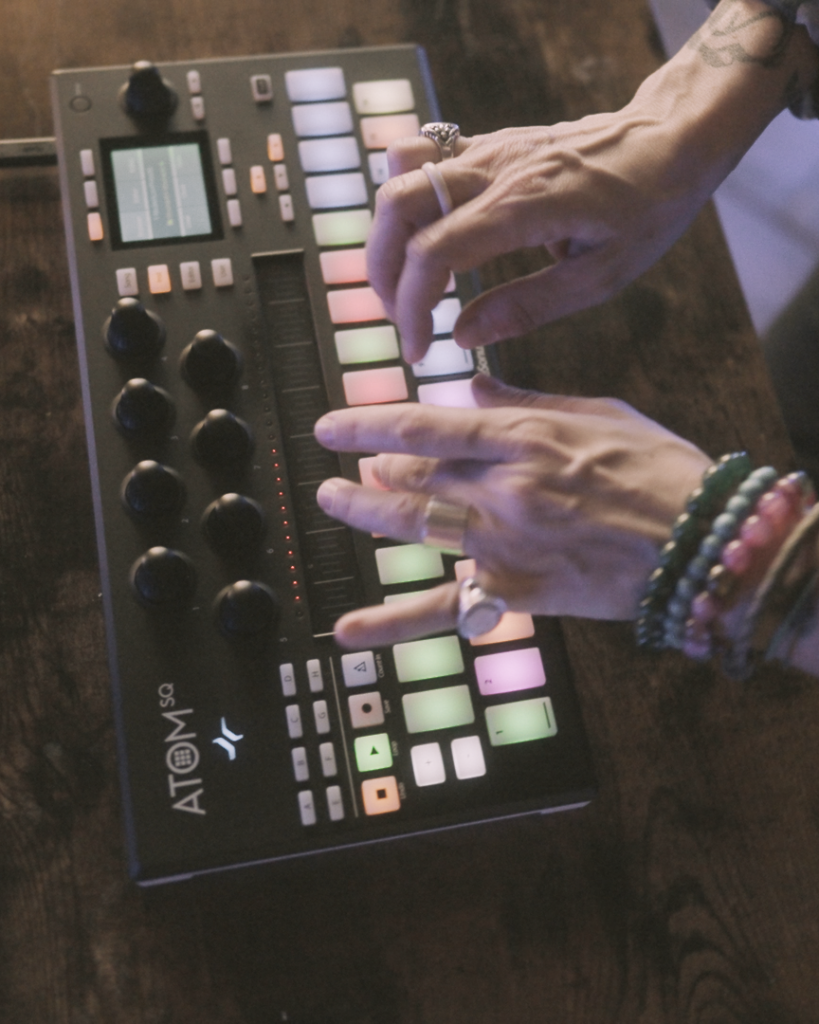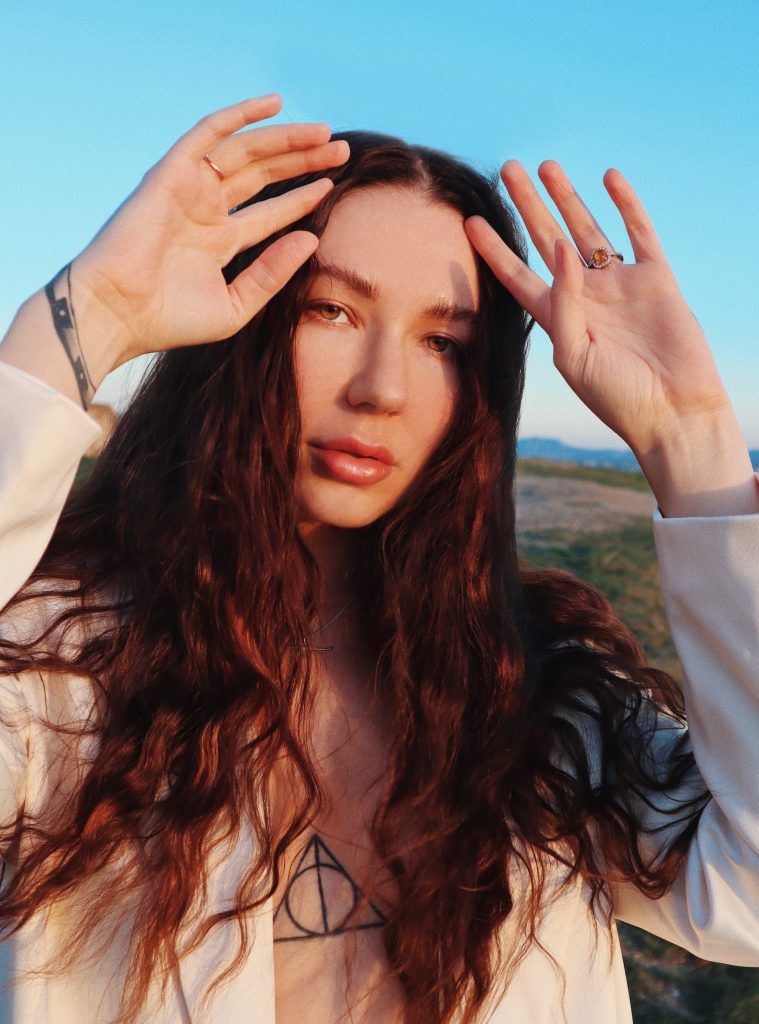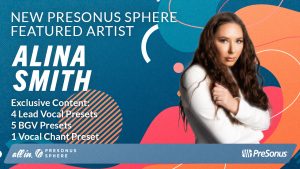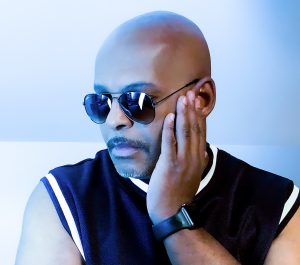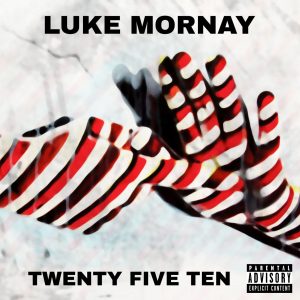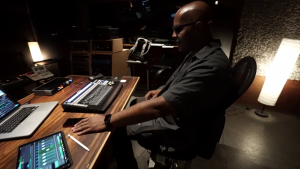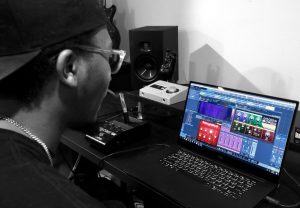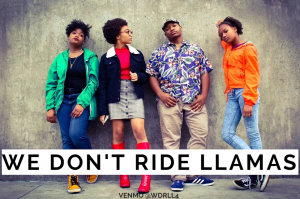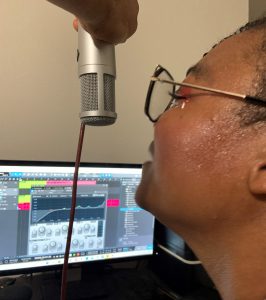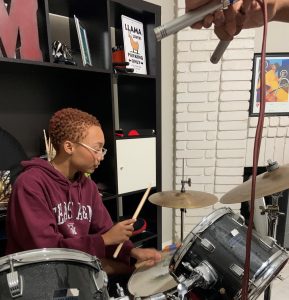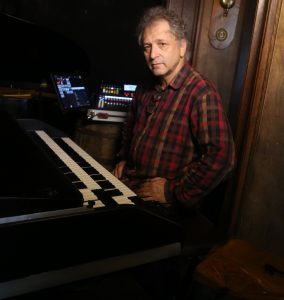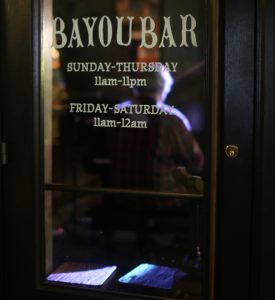Tag Archives: Artist
Studio One: A Brief Exploration with Great Good Fine Okay
Watch the Brooklyn Synthpop duo remix their song “Blame” in Studio One
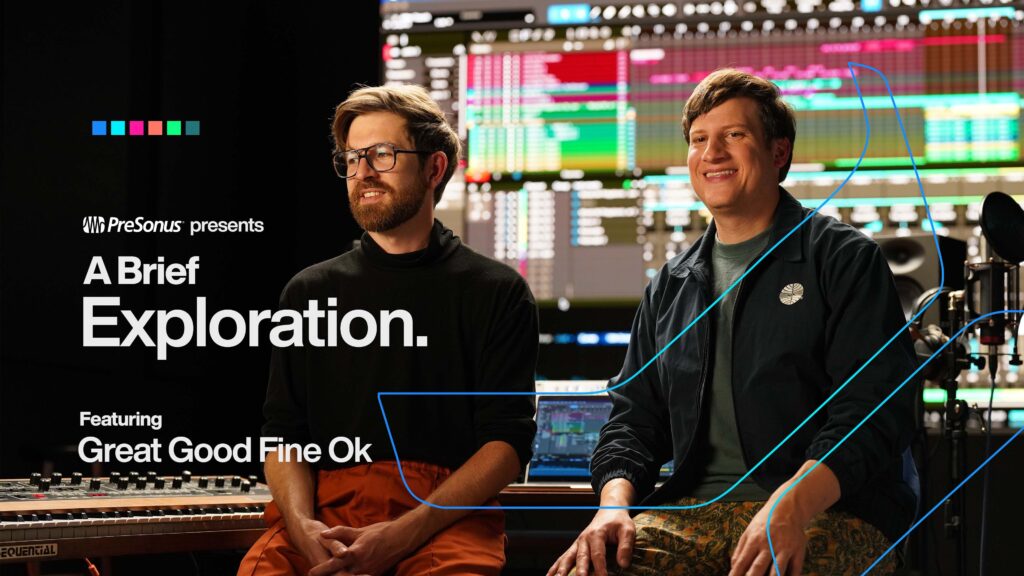
Less than 24 hours after meeting each other, producer Luke Moellman and vocalist Jon Sander had already written their first song together. On that fateful night in 2013, Moellman’s lush, retrofuturist production style collided with Sandler’s soulful falsetto to birth the soaring synthpop banger, “You’re The One For Me.”
Within a year, the duo had released a critically acclaimed EP and secured a major label record deal – an explosive combination that would take them to the top 10 of iTunes’ dance charts, with performances at Bonnarroo and SXSW, collaborations with St. Lucia and The Chainsmokers, and headlining tours of their own. Four albums and hundreds of shows later, the band is still hungry, and performing at the top of their game – as evidenced by the intoxicatingly disco-dipped, dance-inducing single “Blame” from their forthcoming EP.
Watch this episode to see how Great Good Fine Ok remix “Blame” with lush group vocals and richly-layered synths in Studio One.
In this Brief Exploration, Luke Moellman and Jon Sandler of Great Good Fine OK build a richly-layered remix of their song “Blame” using a dynamic range of instruments and effects from Studio One.
Luke begins the process by pulling in an assortment of drum loops as his starting point. “I initially got into Studio One because I was drawn in by the simple drag and drop workflow. It’s super quick to come up with ideas and elaborate on them. And I love the way it looks. It’s just so clean and simple.”
The new beat in place, Luke takes the basic chord idea and splits it up between several different synths to create new textures and tones. “I like doing those by hand because it can give you more interesting stuff than holding down notes on an arpeggiator. So I just record the MIDI, then quantize it, and pick the parts that I like.”
Luke is a big fan of Studio One’s “Retrospective Recording” feature, which allows him to jam freely over the top of the track while he’s auditioning new parts, then retroactively capture standout performances: “When I play the right thing, I can hit ‘retrospective recording’ and just grab it,” which takes the pressure off the performance and allows him to explore ideas without overwriting existing tracks.
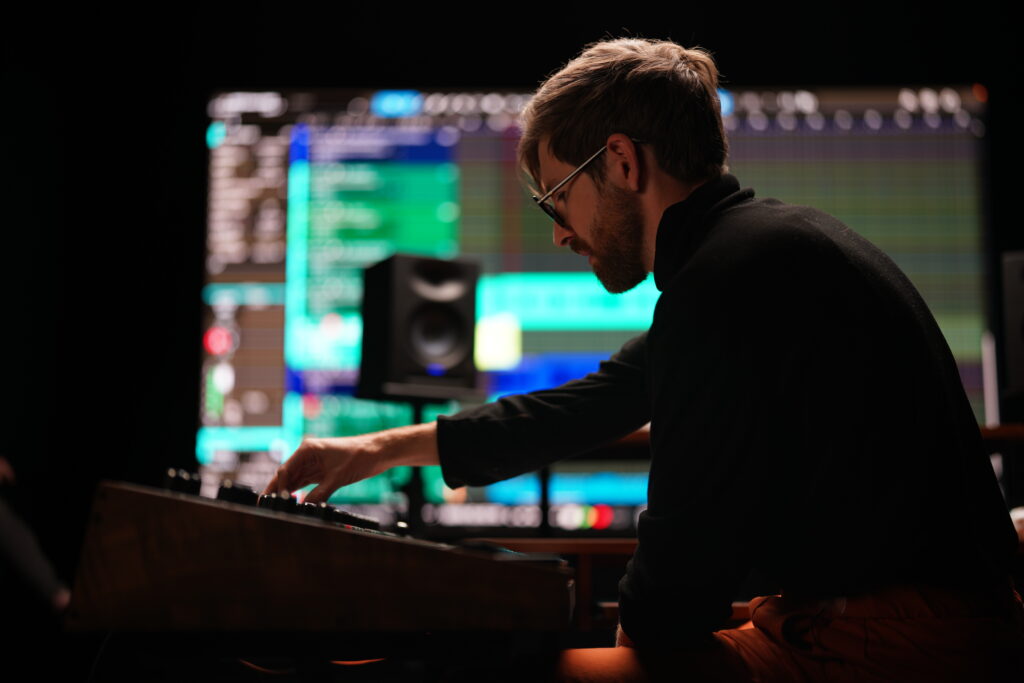
With the rhythmic and melodic foundations in place, Luke brings vocalist Jon Sandler in for a series of soulful vocal takes. “The easiest way for me to get a stacked group vocal sound is to just do a loop record over whatever the section is, get as many takes as you want, and once you have all those, just right-click and then “unpack tracks to layers.’”
“Jon nailed those parts, but it’s pretty easy to just throw them all in Melodyne at once and do just like a little bit of touch-up to the group. Then once they’re bounced out into a stereo track, then you can just go to town with more effects: you can start chopping them up like that rhythmic editing we were doing.”
Any final words of wisdom? “Luke is really a brilliant producer, and it’s so cool to see how quick and creative his mind is and so it’s important to have a DAW that can keep up, and it seems like Studio One really does that better than all the others.”
PreSonus products used: Studio One, Melodyne
Try Studio One+ and check out the rest of our Brief Exploration series here.
PreSonus Sound: Chiara Luzzana
“I don’t need a musical instrument when life plays the best notes”
Chiara Luzzana (2022)
We at PreSonus are extremely thrilled to hear and see Chiara Luzzana put her unique spin of sampling and *PLAYING* our hardware and software products musically in the creation of her performance video above. This performance was captured and edited using recordind software / DAW Studio One. Learn more about Studio One here.
Be sure to also watch her accompanying behind-the-scenes video (below) to learn how she hears and creates sound compositions from objects found in her world!
Chiara talks about her love of the Analog Delay and the Ampire Pedalboard plug-ins in the behind the scenes video around 4:58 and 7:01 respectively.
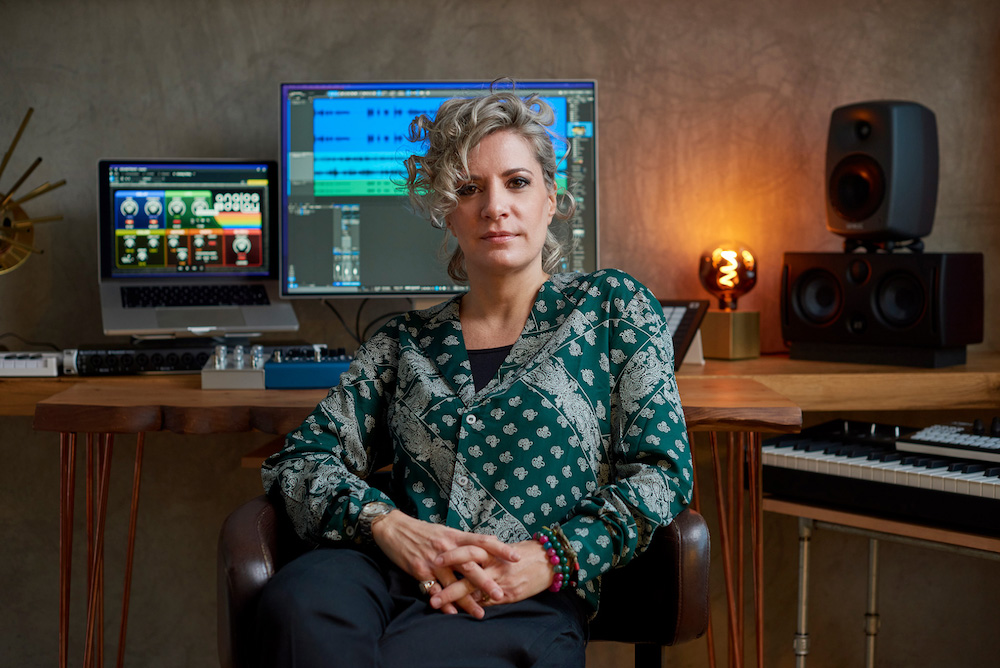
Chiara is a highly innovative and visionary sound designer. She designs the sound of the most important brands in the world.
She has defined a real compositional method, unique in the field of sound branding. As a kid, she studied guitar, clarinet and piano, but something in that method of teaching blocked her creativity. As she developed into an eclectic artist, she wanted to break the rules imposed by musical notation, to create music starting from noise to create visionary soundtracks.
As a former student at Berkelee College of Music, Chiara investigated how the brain reacts to sounds and vice versa, in order to structure every project with a specific mission.
Her sound works are a journey into the soul and psycho-acoustics, not just music.
She studied to become an audio engineer in 2005, and has collected certifications and specializations in every field, from the neurobiology of musical cognition to the construction of microphones, to nourish her obsessive passion regarding every single detail related to sound.
Chiara made use of the ATOM SQ in this production (seen at :50 and 2:04 in the performance video) both as an instrument and as a performance tool to trigger sounds created in Studio One. Learn more about the power of the ATOM SQ
“It is in the noise and in its harmonious imperfection that my creativity finds inspiration”
Chiara Luzzana (2022)
Chiara is also a public speaker from the Italian and foreign stages; through talks and sound performances, she tells the importance of sound in communication and in everyday life.
Chiara has made more than 100 talks from 2015 to today, including an invitation as a speaker to the Senate of the Italian Republic, several TED talks, and was even shared the same stage with Elon Musk, at Tech Week 2021.
Her workshops are held in Milan and Shanghai.
Winner of the “Muse Creative Award” 2017 for the “Best Soundtrack”. Winner of the “Muse Creative Award” 2019 for the “Best Sound Project”. Finalist of “Music + Sound Award” in 2016. Winner of “Best Soundtrack” for the Sandretto Re Rebaudengo Foundation.
KRIS XEN: Modern Fusionist with PreSonus Studio One
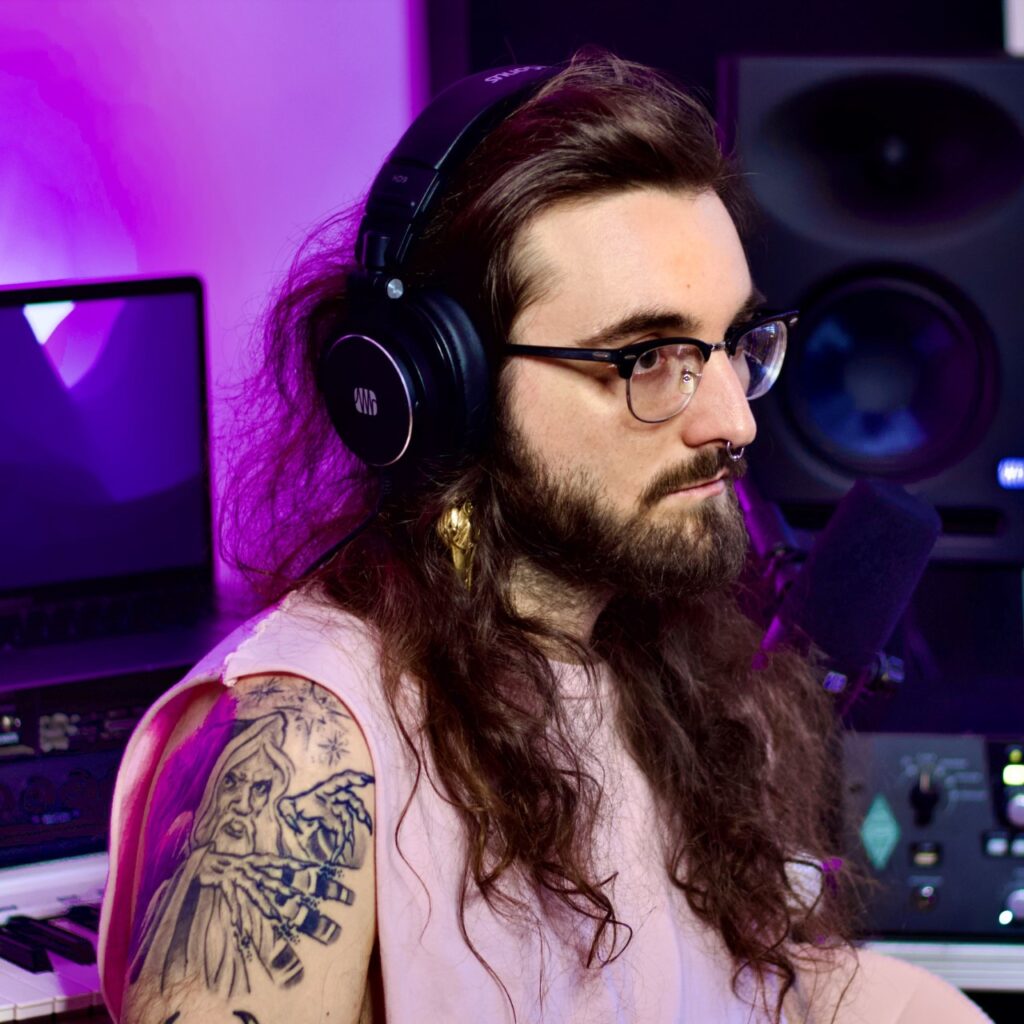
Kris Xenopoulos, AKA “KRIS XEN” is a South African guitar player, musician and producer.
Most well-known for his work with South African death metal outfit, Vulvodynia and the meme-tastic comedy metal band xavlegbmaofffassssitimiwoamndutroabcwapwaeiippohfffx, KRIS XEN does not only have heavy riffs on his mind, but also manages to blend multiple genres into a seamlessly flowing track.
He’s also explored instrumental, guitar-driven music with his prog band Technopath… and now Kris is now branching out as a solo artist.
“I’ve been using PreSonus gear since I was 16 years old, I couldn’t be happier to be working with a brand that’s been such a big part of my life over the years.”
—KRIS XEN (2022)
KRIS XEN takes you on a musical journey that could only be described as modern fusion.
Born in Johannesburg, South Africa, and raised in Durban, he starting off as a drummer at the age of 11 and became addicted to guitars as a young teenager. He started his first bands at the age of 13 and eventually became a member of one of the most famous death metal outfits in South Africa; Vulvodynia. He is constantly evolving as a guitarist, producer and musician, and developed a great love for expanding his musical knowledge and touring.
During the pandemic Kris focused hard on writing, recording guitar and producing Vulvodynia’s most recent offering Praenuntius Infiniti from his home studio. The album was mixed and mastered by Christian Donaldson.

He has played in Ron Bumblefoot Thal’s (ex-Guns N Roses, Sons Of Apollo) band, done multiple headlining tours in Europe with Vulvodynia and Xavleg, and has headlined tours in the States, Australia, and Africa with Vulvodynia.
In Technopath, Kris has worked with some legendary musicians such as Brian Beller (Bass for The Aristocrats, Steve Vai, Joe Satriani), Mattias IA Eklundh (Freak Kitchen) and Nick Johnston.
Kris has also been featured in Guitar World Magazine and was the cover page for “New Voices In Guitar,” outlining “10 fresh guitarists to keep an ear out for in the coming year” for 2020.
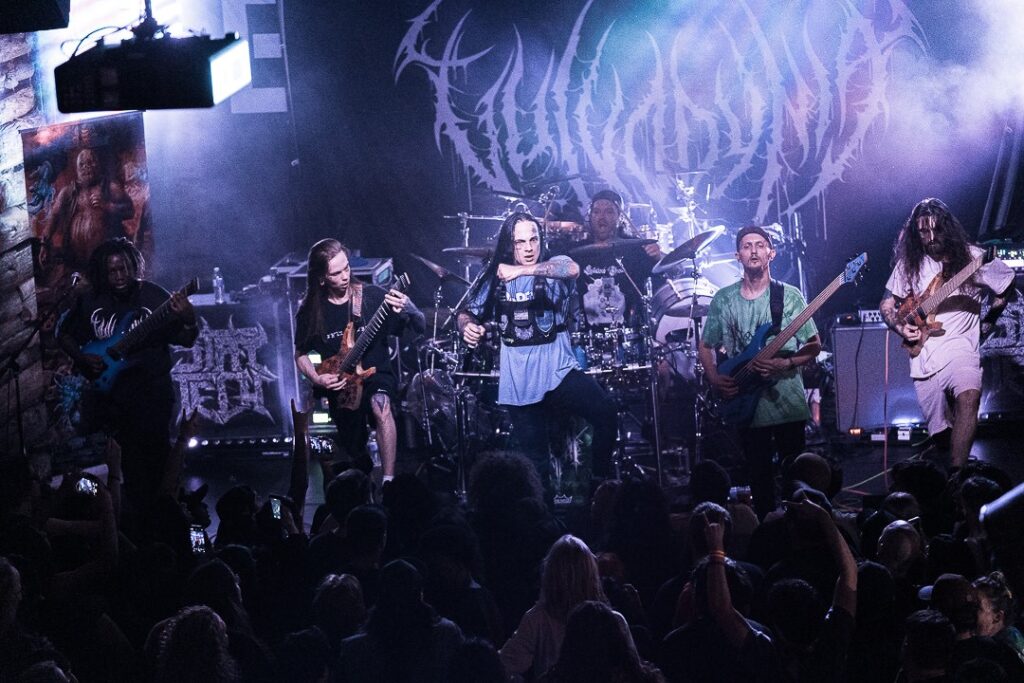
Kris has just released a signature guitar with Ormsby Guitars, available worldwide and is presently on tour throughout the United States with Vulvodynia.
Follow KRIS XEN on Instagram for tour information and musical updates!

Join PreSonus Sphere today to check out KRIS XEN’s exclusive Presets and more by other PreSonus artists!
Only $14.95 per month for Studio One Professional, Notion, and so much more.
The Night Before Christmas (And All Through Studio One)
Check out renowned composer, Robin Hoffmann’s, rendition of “The Night Before Christmas” created exclusively in Studio One showcasing the use of Sound Variations prominently.
HAPPY HOLIDAYS to everyone!
Give yourself or someone you love the gift of music-making this holiday season.
Join PreSonus Sphere today!
Only $14.95 per month for Studio One Professional, Notion, and so much more.
Alina Smith: 2000’s Teen
Alina Smith is a songwriter, a producer, and one half of LYRE, who has written and produced records for traditional acts such as Fall Out Boy, ITZY, Red Velvet, Betty Who, Kirstin Maldonado (Pentatonix), as well as for today’s top digital creators like Kenzie Ziegler, Lexi Jayde, Niki and Gabi.
She has accumulated hundreds of millions of streams on songs she’s been a part of and earned several #1 singles. Alina’s work has been profiled in Forbes Magazine, Billboard Magazine, American Songwriter, 1883 Magazine, and more. She’s also well-known in the sound design space with LYRE’s Splice sample pack called “Perfect Pop.”
Here’s what you need to know, straight from Alina:
So I started recording myself singing pretty early on, I wanna say… 2005. I had a dynamic mic I plugged directly into the audio input of my prehistoric laptop and I had absolutely zero training in anything related to production. Then, a few years later I upgraded to an M-Box and a $100 MXL mic which is, funny enough, the setup that I got my first songwriting cut on. From then on, I kept progressing and learning, which I still do to this day, although I do have a pretty large bag of tricks at this point that I can dip into when I record different singers in different genres.
A few years ago I switched from Pro Tools to Ableton Live for instrumental production, but I was struggling with the vocal production side of things in there because at the time Ableton didn’t have playlisting, so recording and comping vocals was super time-consuming and clunky.
I decided to test-run Studio One and fell in love with it immediately! With the ease of setting my own key commands, I was able to choose the commands I was used to and not have to learn a whole new set. Sprinkle in the Melodyne and VocAlign via ARA integration, and I knew that I finally found my soulmate vocal production DAW!
 With a PreSonus Sphere membership, I’ve discovered a lot of new plug-in effects I really love, like the Analog Effects Collection. The Analog Delay is chef’s kiss!
With a PreSonus Sphere membership, I’ve discovered a lot of new plug-in effects I really love, like the Analog Effects Collection. The Analog Delay is chef’s kiss!
I’ve really come to enjoy the PreSonus PX-1 mic, which I use for on-location recording quite a bit. With the right “in-the-box” vocal chain, I can make it sound bright and crispy and much pricier than it actually is!
It’s been a really hectic year for me! At the top of 2021, I set the intention of not holding back in any area of my life or career and for the rest of the year it translated into me pursuing several things all at once. I ended up organizing and hosting an online music convention, called the Modern Music Expo, which you can watch a replay of here:
I also released an EP called 2000’s Teen, which is my first body of work as an artist! And, seeing as my main job is writing and producing music for other artists with mg production team LYRE, I also did a ton of that, my favorite being “Mafia in the Morning” by ITZY, which came out this spring.
I’m already working on my next release: filming a music video and planning the drop. Writing and producing for various projects and making production tutorials for YouTube and TikTok. But mostly, I’m just trying to relax and enjoy fall, which is my favorite time of the year. It’s so important for artists to replenish their batteries, so that’s what I’m doing!
Let’s welcome Alina into the family as a Featured Artist on PreSonus Sphere!
She is sharing ten of her custom Vocal FX Presets for all PreSonus Sphere members to access and enjoy:
Join PreSonus Sphere today to check out Alina Smith’s exclusive Presets and more by other PreSonus artists!
Only $14.95 per month for Studio One Professional, Notion, and so much more.
A mobile recording studio in the Colorado Rockies with Nathan Larsen
Don’t leave home without PreSonus.
Nathan certainly didn’t forget to bring his ATOM SQ along for this amazing songwriting excursion into the Colorado Rockies!
PreSonus, Wherever sound takes you.
Luke Mornay: Twenty Five Ten
We’re extremely excited for our good friend and recording artist Luke Mornay on the release of his new album Twenty Five Ten which has already grabbed a 5-Star review on New Sounds UK!
Let’s find out more about what he’s been up to with this project as a longstanding user of PreSonus hardware and software for his musical endeavors through the years.
Luke: I’m a producer / composer and mixing engineer best known for my remixes for Kylie Minogue (a Grammy-nominated Billboard #1), The Killers, Robbie Williams, Bob Marley and Amy Winehouse–to name but a few–I just produced Twenty Five Ten, an album in homage to my late mother.
It has sounds for here and now, rooted in decades of influences and experiences.
Featuring successful collaborations with Kevin Godley (10 CC, Godley & Creme), model Roxy Horner, Nick Tart (Diamond Head), Rachael & James Akin (EMF), Lucy Pullin (The Isle of Man, Robbie Williams), Melanie Taylor, Flora, Phat Hat.
My 18-track album was recorded in various places such as Brisbane (Australia), Tel Aviv, Mallorca, Brussels, Los Angeles, Dublin, Katowice (Poland), and Baton Rouge (USA).
Besides my emotional motivation to get this project done, I really wanted this record to connect genres, eras, and mix generations. Somehow connect the dots between timelines in a unified story, with its joyful and bonkers moments, with its own directions and contradictions, or more simply put: my story.
I have a rock-solid PreSonus eco-system based around a Quantum 2, FaderPort 16, and ATOM, nothing superfluous—they all have a purpose. The FaderPort 16 is giving me the gestures I’m used to when balancing tracks on a console; the vibe is based on even relationships between instruments.
It’s a different experience, and the decisions I’m making helped me to assign a more prominent role to sounds buried in a mix, with fingers on all faders I’m sorta painting a sonic picture based on my impression. With a mouse it’s also achievable, but it’s more cerebral; it’s laser focused, and less expressive.
The ATOM is perfect when I want to jam with drums or synth shots. It’s perfect for fortunate accidents! I come up with ideas I wouldn’t get from a keyboard. In some of my remixes I like to slice vocals that I then drop into impact to create what we call “vox lox” to build new lines, for example that was a centerpiece of my Kim Wilde Kids In America remix. The new chorus idea was all done with Impact XT and the ATOM.
Quantum 2 is just brilliant, it’s been my companion in so many tasks, it’s never let me down. As musical director for a Native American show I’m in charge of, I used this thing on stage in large venues with thousands of people, the sound was amazing and so stable. I also mixed a full season series for a TV network; a short film for Disney; sound mix for HBO; my album and remixes—it’s been so reliable and with a constant, pristine sound. It fits perfectly in my backpack, so I’m super mobile.
For what applications are you using Studio One Professional?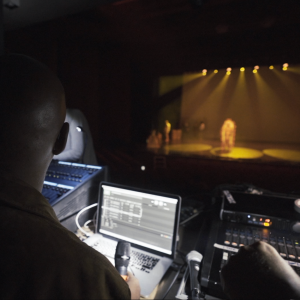
I’m working 100% in the box and I’m using Studio One for everything and anywhere.
I usually work from home, and when necessary I just take my laptop to a commercial studio, plug my Quantum 2 to their system, launch Studio One, and I’m set. I can do the adjustments I feel are needed and go back home.
My album was also mastered that way, I’ve had a reliable listening environment there, and all songs loaded into the project page. The big plus was when I felt that I was doing too much tweak, I could just open the song, fix whatever was needed with one click and go back.
Lately besides my remixes, I’ve been asked to mix a couple of original songs from the ’80s/’90s on which I’ve been given the multi-tracks, such as Fine Young Cannibals, Shakespear’s Sister, or Bananarama to name but a few.
I could really set up Studio One to be ready at all time and nicely organized like a vintage console, and now with Version 5 Professional, I can switch between an SSL or Neve sound in just 2 clicks. That’s fantastic.
What led you to choose Studio One?
Studio One is just another part of me, it never gets in the way. It’s a companion standing in front of me that is always ready for war.
The interface is very clean and soothing in a way, it always feels like some quietness before the storm. It also sounds great, fully-featured and with the Project page, you can virtually do anything within ONE app.
These days as a musician you have to wear so many hats that the last thing you want is distractions and learning curves on different apps. With Studio One I can produce, compose, mix, and master with features located in familiar places.
What Studio One features have proven particularly useful and why?
The drag & drop concept, be it for sounds, presets, instruments, or FX. This thing is a home run. When I feel that I’m not going to be in a productive mood, I spend a lot of time organizing all of the above for future sessions.
How does Studio One compare to other DAWs you have used?
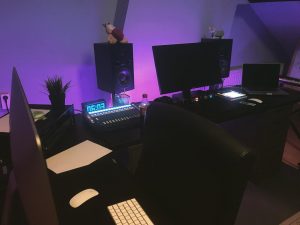 This software brings me peace of mind, and that’s priceless. PreSonus shines by making huge steps at their own pace with three priorities: the user experience, consistency and coherence.
This software brings me peace of mind, and that’s priceless. PreSonus shines by making huge steps at their own pace with three priorities: the user experience, consistency and coherence.
They can be the adult in the room in a world where feature lists to sell new major updates are prioritized over the quality of their achievement.
With backward compatibility, if something is poorly implemented from the start, then you’re stuck with it until the end of days. We all love new features, of course, but it shouldn’t come at that price.
So when I see something not yet available in Studio One, I just tell myself: “If you can’t make music with what Studio One has to offer today, maybe you should just quit.” The kid in me is not a fan of that sentence, but it’s a nice motto to move on.
Which Studio One feature or concept doesn’t get enough spotlight (or isn’t talked about enough) in your opinion?
Without a doubt I’d say macros, they can be really powerful, I remember doing one for a friend of mine, he was new to Studio One, he was looking after a way to slice and map samples easily.
So I came up with one that analyzed the loop, detected transients, sliced at transients and sent them to Sample One XT, it was so good that I’ve added it to a shortcut and ended up using it myself. I’m thinking of sharing it with the community.
Any useful tips/tricks or interesting stories based on your experience with Studio One that would be of interest to our user base?
During the lockdown with friends we’ve had some virtual sessions, we were sending ideas back and forth and it appeared that none of them used MusicLoops, they were saving their ideas or overdubs as songs.
I told them that I have a folder called ideas, so every time I try a new synth or jamming with a virtual instrument, I just drag & drop it to that folder, and it then becomes an asset for my future project. Everything is saved in a single file with an audio version, MIDI, presets, and FX used all in one go.
From time to time, I like to browse that folder to see if there’s anything inspiring or useful.
That’s basically the story of the opening track on my album, I’ve had this nasty groove made with Impact XT floating around for some time, and one day it was the right idea for the mood I was in.
Never lose your ideas, phrases and so on, don’t expect to remember anything two years or two months from now with random or cryptic names… Just drag and drop in a place, where you’ll find your sparkles of ideas at all times!
Any final comments about PreSonus and Studio One?
I always found the name intriguing, now that I see how powerful it’s become over the years, and on its way to become the ultimate DAW, I take it that it was not just a name… it was a plan.
PreSonus Sphere Members: check out Luke’s newest Studio One Presets on his Featured Artist Profile!
Facebook | Instagram | YouTube | Spotify
Website : www.lukemornay.com
RMB Justize: Music Of The (PreSonus) Sphere
Discovering new sonic universes to explore is what being a musical artist is all about!
Let’s dive into RMB Justize’s discussion about his worlds of sound, and how he does it all with PreSonus Sphere:
“Versatility and persistence are a deadly combination of characteristics. They are much-needed weapons to have in an artist’s arsenal.”
Based in Chicago, IL with ties to the DMV area… Taylor Gang’s in-house producer Ryan “RMB Justize” Baker grew up in a musical household, his mother being a classical violinist for the Chicago Sinfonietta, exposing RMB’s ears as early as six years old.
“I caught the music bug from Mom, for sure. I remember turning 11 or 12 and having nothing but a voice recorder and a Yamaha DJX keyboard. Skateboarding was the thing back then, with influences ranging from Sum 41 to Incubus to The Neptunes and Noreaga. A couple of years later I finally dove into making music with computers, using every piece of software I could get my hands on until now. But… then came PreSonus Studio One, which changed it all for me.
“The interest came from an artist I worked with at the time—he wouldn’t stop mentioning it! After spending countless months into years on ProTools, FL Studio and Reason, I wanted a program that could do it all. I’m a religious template maker, as most are, so the workflow determines the imagination most if not all of the time and Studio One takes care of the madness with ease. Let’s just focus on the music and pushing envelopes more than finding where to click certain stuff. PreSonus did it right, ranging from AudioBox interfaces I’ve owned in the past, all the way to the new Quantum which gives me more than enough power to control the room.”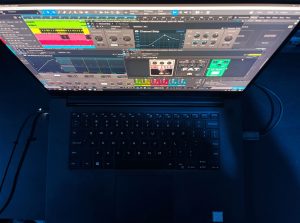
Since the premiere of Studio One version 5 in July of 2020, RMB has become a power user… eventually convincing a few fellow producers and artists to try it, if not make a full switch.
“There have been times where I’ve walked into big label studio sessions and people look confused because they’ve never seen Studio One in person! Once I show my way of doing certain things, using certain plug-ins in certain ways, they’re overly surprised. It’s hands-down the fastest program, which lets me flex my mind-work and turn my rough thoughts (even voice notes) into full records. I’ve had people come to my studio for sessions and look surprised when they ask why I use it. You have to try for yourself to find your workflow.”
Honorably noted, PreSonus Sphere has made his processes for online collaboration, recording, mixing, and mastering an album-quality one-stop-shop, helping the migration become a breeze. Especially during times of a pandemic where people can’t communicate like they normally would, it’s a necessity.
“I think all DAWs should have an ecosystem such as PreSonus Sphere, whether you’re just getting started or an A-list musician. The tools available make it seamless to share files and keep up to date on things like deadlines and most recent notes/mixes, rather than scrambling through emails and hard drives (which we can all relate to, I’m sure). Having that system in one spot, one site, one page, actually kept me in line when finishing a label record and staying up to date without confusion.” (Chevy Woods—Since Birth)
Recently focusing more on production and audio engineering as well, the AAF import feature has been a godsend.
“I still find myself walking people through how to convert sessions to AAF rather than tracking out. There is no other program that will line the session up identically with automation and fades, to say the least, which saves more time than I expected. That’s just a small piece of my realization, of how capable this DAW is. Cheers, PreSonus!”
Since the start of the COVID-19 pandemic, RMB’s main focus is to create cutting-edge music, knowing he has the perfect DAW to do so, with no issues.
RMB Justize @ PreSonus Sphere
We Don’t Ride Llamas… yes. WDRL!
Afropunk. Counterculture. Art. Rock Music. Weird things. Generation Z.
These 4 siblings hail from Austin, TX and have been a band for 6 years now.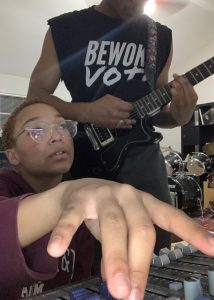
Around the end of 2019, We Don’t Ride Llamas (WDRL) was introduced to PreSonus by Grammy nominated music producer, King Michael Coy (Dr. Dre, H.E.R, Anderson .Paak, Ms Lauryn Hill, Busta Rhymes, Snoop Dogg, Bilal, Kendra Foster, Frank N Dank) who has been a Studio One Professional endorser for several years now.
By March of 2020, the group was armed with an AR16c mixer, a PX-1 condenser microphone, the PM-2 stereo pair mics and Studio One Professional DAW software, the kids have been upping their recording game while staying home during the time of COVID-19.
Being the super-duper creative explorers that they are, WDRL has maximized their use of these products in true DIY fashion:
From creating cool voice-overs (did y’all ? the trailer video above ☝️ yet?), producing band interviews and promotional videos to the more obvious use case of recording original music and cover songs… the band can now achieve high quality recorded or live streamed audio that kids from previous generations would not have been able to do.
As a matter of fact, We Don’t Ride Llamas recently just wrote a song called “Buddy” that is featured in Welcome To Sudden Death, now streaming on Netflix. You can check out both the “Groove” and “Dance” mix versions on Spotify here!!!
Synecdoche is the long awaited EP that’s on the horizon for release. The recording is an extremely personal project for WDRL as it explores feelings of being displaced, yearning for the future, their general melancholy at the current state of the world and how everything (for them at least) always comes full circle.
Here are a few things they had to say to us:
“We knew that he company has a longstanding reputation for products that are easy to use, sound great and within the budget for most rock bands. These are the reasons we initially were interested in PreSonus. Can’t wait to get our hands on one of those ATOM pad controllers (hint, hint)… :)”
“We love how user friendly and multifunctional everything is! Your products make us feel like sound alchemists even though we’re still fairly new to recording our own stuff at home.”
“The fact that the AR16c mixer is pretty simple to understand and we can just pick it up and go record somewhere is amazing. Also the amount of product videos and training tutorials PreSonus has available online now makes a huge difference.”
Instagram | Official Website
David Torkanowsky: Livestreaming in the Big Easy with StudioLive 32SC
[For those of you who don’t know already about the talented New Orleans based jazz pianist David Torkanowsky, you are about to. Lucky for us, New Orleans is just an hour drive to the Southeast of Baton Rouge (where PreSonus is based out of).
We’re honored to have our relationship with David: not only is he a true master improvising musician from the city where Jazz was born, he is also in tune with the latest 21st century audio technology that helps artists actualize and share their sound to audiences world-wide.
Without any further ado, we’ll let him take it from here…]
I’m David Torkanowsky and I’ve been lucky to have grown up in New Orleans under the tutelage of Ellis Marsalis, Danny Barker, James Black, Al Hirt and other Smithsonian-level greats… too many to mention.
I’ve also toured and recorded with artists as different as Al Hirt and Al Jarreau, Boney James, and Joe Henderson. I’ve been M.D. for the great vocalist Dianne Reeves.
The touring and performance economic model for all musicians, regardless of genre, has been decimated by the COVID-19 pandemic.
Many artists, myself included, have navigated a sudden and steep learning curve regarding our social media presence. New Orleans has always tended toward the organic and away from the technical aspects of playing music, which I love… but that paradigm has proven to be a headwind as we move toward our new reality.
Online work has moved from being one of the revenue channels in our business model to the only viable channel.
Posted by PreSonus Audio Electronics on Thursday, May 28, 2020
So, I’ve been producing, directing and playing in livestreams from The Bayou Bar at The Pontchartrain Hotel in New Orleans for the past month, with artists such as: Ivan Neville, Nigel Hall, The Tin Men, Zachary Richard, Meschiya Lake, Sasha Masakowski, Jason Marsalis, Herlin Riley, Davell Crawford, and jazz great Cyrille Aimée.
Many cats are teaching online, and many more are performing live. These live performances have completely replaced the in-person delivery of our art. Although, in many respects, it will never duplicate the transformative experience of being in the same space. The only way we can minimize this disparity is by presenting this content in the best possible way. Primarily, it has to sound good! Most of the streams that I’ve seen, some with world-class artists, don’t really touch me because they sound less than average. A solo acoustic instrument can sound just okay through an iPhone mic, but it’s never truly impactful. Add any other instruments, and you can just forget about it.
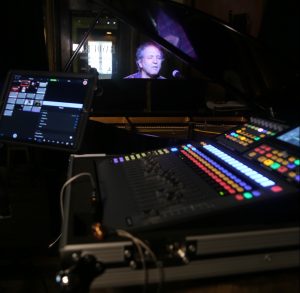 That’s why the PreSonus partnership has been such an asset.
That’s why the PreSonus partnership has been such an asset.
I’ve gotten a massive amount of feedback (the good kind!) from the listening public about how amazing these artists are sounding on these social media live broadcasts, and there’s one reason:
The PreSonus StudioLive 32SC. Their newest Series III S line of consoles are exactly what the doctor ordered to mix streamed performances. I’m using the 32SC, the powerful and compact member of the Series III family. The Fat Channel technology makes tweaking the impact of a particular instrument intuitive and fast. The EQ, Compression and digital FX are all super usable. It’s a game-changer. It’s one serious piece of gear!
Contact David for professional inquiries: torkanowsky@me.com
[Incidentally, from now until Aug 31, 2020, anybody who buys a qualifying StudioLive Mixer will get a pair of Eris E7 monitors for free!]
